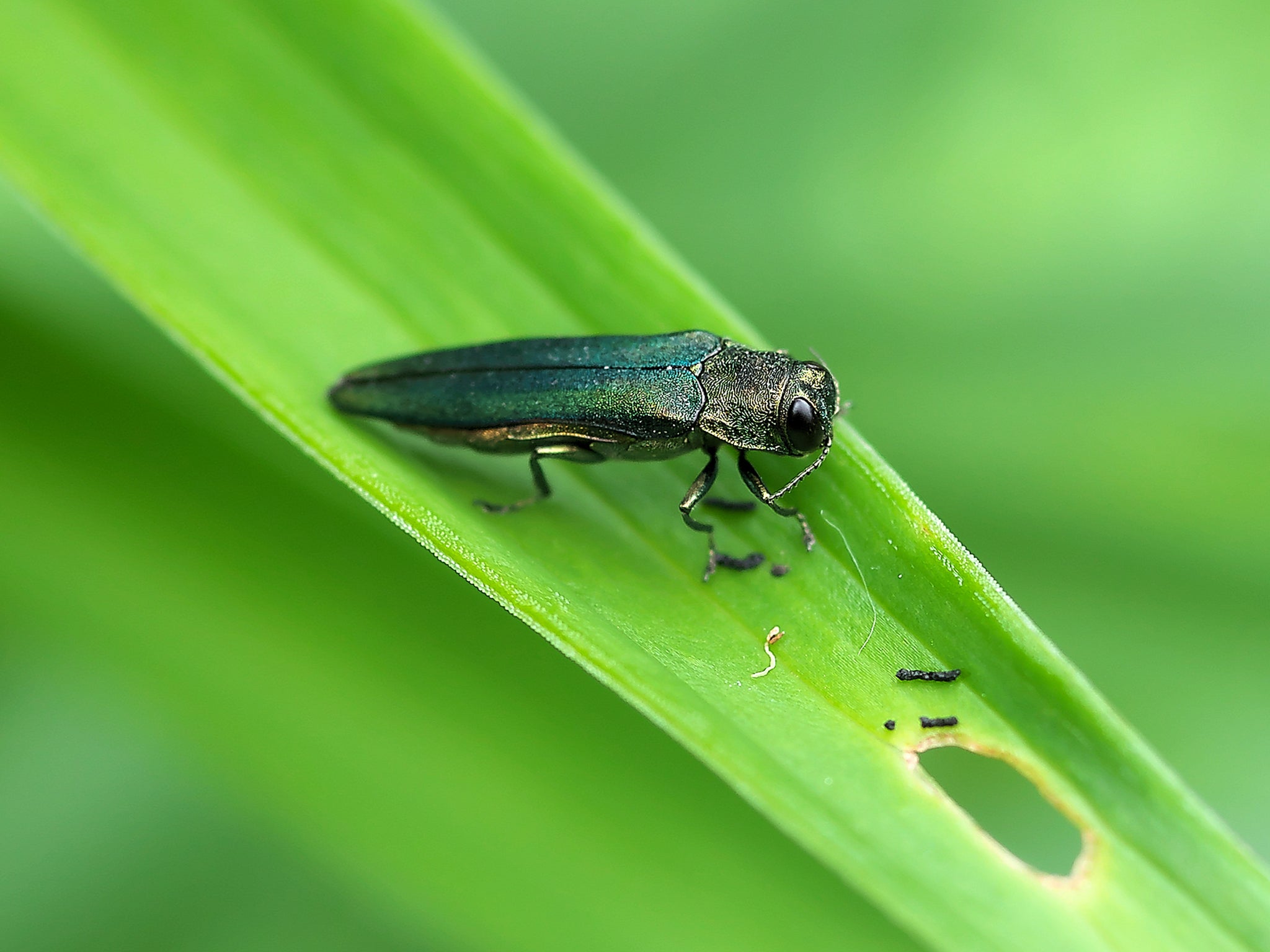
Ash trees are fighting a war on two fronts. Not only do they have the fungal disease known as ash dieback to worry about, but they are also threatened by the emerald ash borer — a species of beetle responsible for the deaths of hundreds of millions of trees in the US.
But new research has identified genes that could protect trees from the deadly beetle.
Infestations of the beetle are yet to be found in the UK, but European trees are at risk. Emerald ash borers were discovered near Moscow around 15 years ago and they have now spread into Ukraine.
The beetle is expected to eventually kill billions of trees around the world.
They lay their eggs into crevices in the bark, and the larvae then burrow through the bark after hatching, and begin feeding in the living tissues of the tree. They produce sinuous tunnels as they feed through four larval stages, and reach a final size of between 26 and 32mm long. Feeding tunnels can be 20 to 30cm long, according to the British government’s Forest Research website.
As the larvae increase in size, so does the extent of the damage they cause, and they can eventually girdle and kill branches and entire trees.
Symptoms of emerald ash borer infestation include trees being late to leaf, while thinning foliage can lead to decline and eventual death.
But DNA sequencing of more than 20 ash tree species from around the world has revealed over 50 “resistance genes”, which make chemicals harmful to insects.
The study, by a research team from Queen Mary University of London and the Royal Botanic Gardens, Kew, means breeding or gene editing could be used to place these resistance genes into ash species currently affected by the beetle.
The work was assisted by a team in Ohio, where the US Department of Agriculture Forest Service tested the resistance of various ash tree species by hatching emerald ash borer beetle eggs on the bark of the trees.
They found resistant ash trees generally killed the larvae when they burrowed into their stems, but susceptible ones did not.
Experts have said they are yet to understand how the threat from the beetle might interact with the ash dieback fungal disease.
Dr Laura Kelly, an academic visitor at Queen Mary, and research leader in plant health at the Royal Botanic Gardens, Kew and first author of the study, said: “Ash trees are key components of temperate forest ecosystems and the damage caused by emerald ash borer also puts at risk the many benefits that these forests provide.
“Our findings suggest that it may be possible to increase resistance in susceptible species of ash via hybrid breeding with their resistant relatives or through gene editing.
“Knowledge of genes involved in resistance will also help efforts to identify trees that are able to survive the ongoing threat from emerald ash borer, and, in turn, could facilitate restoration of ash woodlands in areas which have already been invaded.”
Professor Richard Buggs, professor of evolutionary genomics at Queen Mary and senior research leader in plant health at the Royal Botanic Gardens, Kew, said: “The emerald ash borer has killed hundreds of millions of ash trees in North America since it was accidentally imported to Detroit from Asia in wooden packaging. The beetle is now spreading across Europe, where we don’t yet know how it will interact with the invasive fungal pathogen causing the ash dieback epidemic.
“We need to be prepared to take decisive action to stop the spread of pests and pathogens that damage trees and the natural environment, as well as pathogens that attack humans.”
Dr Jennifer Koch, a research biologist with the United States Department of Agriculture Forest Service, said: “These candidate resistance genes, once validated, have the potential to greatly expedite the breeding process and the production of improved planting stock for restoration of forests and landscapes decimated by emerald ash borer.”
Ash dieback has been predicted to cost £15bn in Britain according to researchers from the University of Oxford, Fera Science, Sylva Foundation and the Woodland Trust.
However, separate research published earlier this year indicated the ash dieback pandemic was less deadly to more isolated trees and suggested the impact of the fungal pathogen could be less damaging than previously estimated.
The new study is published in the journal Nature Ecology & Evolution.







